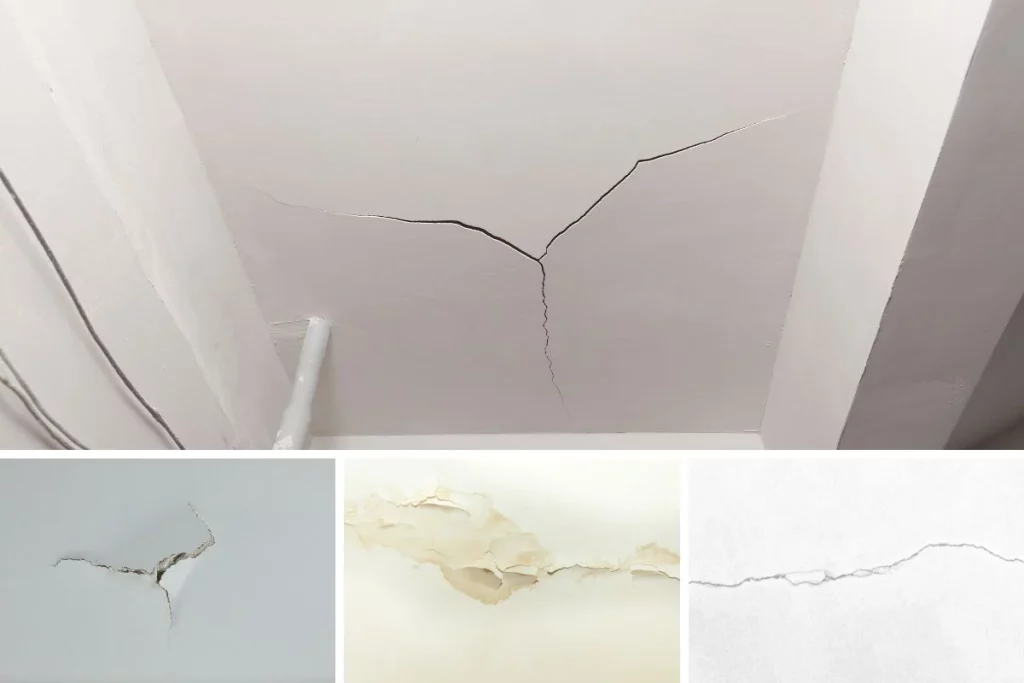Ceiling cracks can be a cause for concern for homeowners, signaling potential structural issues or simply cosmetic inconveniences. In this comprehensive guide, we will delve into the various types of ceiling cracks, unraveling the mysteries behind their appearance, and providing insights into their possible causes and solutions.

Understanding Types of Ceiling Cracks: A Closer Look
Ceiling cracks come in various forms, each telling its own story about the underlying conditions of a structure. By identifying the type of crack, homeowners can gain valuable information about the root cause and take appropriate measures.
Hairline Cracks: The Thin Red Line
Among the most common types of ceiling cracks are hairline cracks. These tiny, narrow fissures often appear due to natural settling or changes in temperature and humidity. While usually harmless, they can be aesthetically displeasing.
Settlement Cracks: When the Foundation Shifts
Settlement cracks are a more significant concern, as they indicate movement in the foundation. As a home settles over time, these cracks may appear, demanding attention to prevent further structural damage.
Stress Cracks: Signs of Structural Stress
Stress cracks are usually distinguishable by their diagonal patterns. They emerge when structural components, such as beams or supports, undergo excessive stress. Identifying and addressing the source of stress is crucial to preventing these cracks from worsening.
Spiderweb Cracks: The Intricate Web of Concern
Spiderweb cracks, also known as crazing, create a network of fine lines resembling a spider’s web. Often associated with aging materials or improper paint application, these cracks can be both a cosmetic and structural issue.
Expansion and Contraction Cracks: Weather’s Impact
In regions with extreme temperature variations, expansion and contraction cracks may develop. These cracks occur when materials expand in heat and contract in cold, causing tension that results in visible fissures.
Read too: Understanding and Addressing a Condensation Leak in the Ceiling: Decoding the Drip
Exploring Causes
Understanding the types of ceiling cracks is only part of the puzzle. To truly address the issue, it’s crucial to delve into the potential causes behind their appearance.
Common Causes of Ceiling Cracks: Unraveling the Mystery
- Foundation Issues: Settlement cracks often stem from problems with the foundation. Uneven settling or shifting can lead to cracks that may compromise the stability of the entire structure.
- Structural Stress: Stress cracks are indicative of excessive loads on structural components. Identifying and rectifying the source of stress, whether it’s inadequate support or structural design flaws, is essential.
- Aging Materials: Spiderweb cracks are often a result of aging materials, particularly if the ceiling is made of plaster. Over time, materials can weaken, leading to the development of intricate cracks.
- Temperature Fluctuations: Expansion and contraction cracks are prevalent in areas with drastic temperature changes. Proper insulation and material selection can help mitigate the impact of weather-induced cracks.
Conclusion: Addressing Types of Ceiling Cracks Effectively
In conclusion, understanding the types of ceiling cracks is pivotal for homeowners looking to maintain a safe and aesthetically pleasing living space. By identifying the specific cracks and their causes, appropriate measures can be taken to address the issue promptly.
Regular inspections, timely repairs, and proactive maintenance are key elements in preserving the structural integrity of your ceiling. Remember, when it comes to ceiling cracks, early detection and intervention can make a significant difference in preventing further damage.
Don’t let ceiling cracks jeopardize the safety and appeal of your home. Stay informed, take action, and enjoy a well-maintained living space for years to come.
